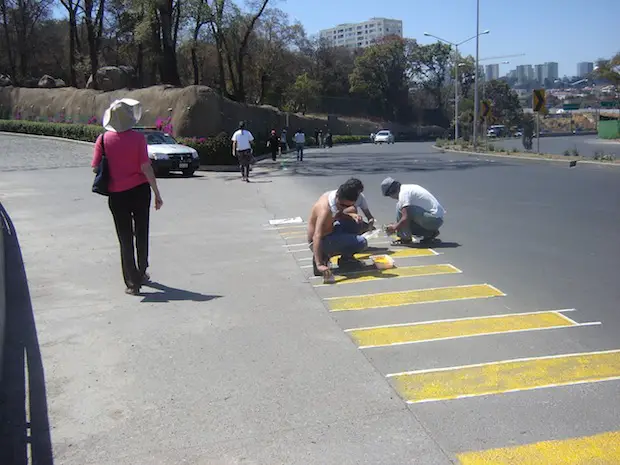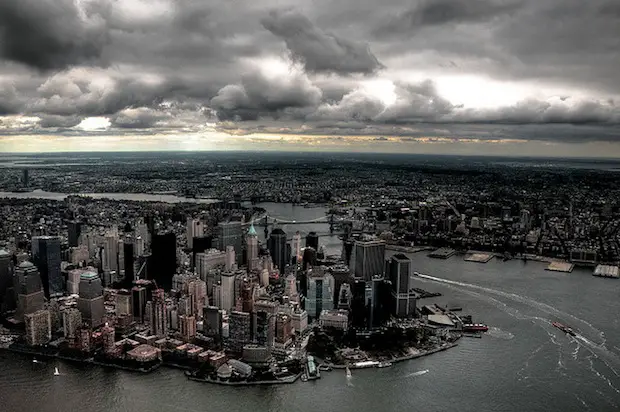Income Inequality and Transportation Policy: The Challenges Facing Mexico’s Next President
Officially, Mexico is a federal democratic republic like the United States. It has three arms of government, the executive, legislative and judicial. However, for 71 years Mexico was controlled by one political party, the Institutional Revolutionary Party (PRI), at the national government and at a big portion of the state and local levels. In 2000, in what are considered by many as Mexico’s most freest and fairest elections, Vicente Fox of the National Action Party (PAN) was elected president and ended the 71 years of PRI rule and stronghold over the country. In 2006, after a much contested presidential race between Felipe Calderon of the PAN, and Lopez Obrador of the Party of the Democratic Revolution (PRD) the ex-mayor of Mexico City, Felipe Calderon was declared the victor and assumed the presidency on December 1, 2006. In his campaign he promised to tackle tax evasion, corruption and poverty. However, even with changes at the executive level, the PRI still remained a strong presence in Mexican politics.
In the recent national elections that took place in July 2012, the stakes were again high. The presidency, all 128 Senate seats, and all 500 Chamber of Deputies were up for the taking. As expected the presidential candidacy was a very interesting and controversial race between the three major political parties. Lopez Obrador from the PRD ran again. The PRI entered the presidential race with a new candidate, Enrique Peña Nieto, a fresh face, with a slight celebrity status (his wife is a famous Mexican actress), and a great track record as the recent Governor of the State of Mexico – with its capital, Toluca, being an exurb of Mexico City just about an hour away. Since presidents in Mexico are only allowed to serve for one six-year term, Calderon did not run for reelection; instead the conservative PAN party launched Mexico’s first woman candidate, Josefina Vázquez Mota, for the presidency. However, she proved to be too conservative to rally up enough support from women and finished last in the race between the 3 main parties.
Mexico went into economic turmoil after the devaluation of the peso in 1994, mildly recovered in the early 2000s, and was again hit hard by the 2008 global economic crisis. Despite these economic ups and downs, as a country, Mexico is the second largest economy in Latin America, however, income inequality in Mexico remains a problem due to job shortages, low wages and underemployment. Though Calderon has been a huge advocate of environmental conscious policies with laws like the General Climate Change law passed this June, or policies to incrementally bring gas prices in Mexico up to international levels, and turning over 5,500 abandoned spaces into functioning public spaces; his top economic priorities have been to reduce poverty and create jobs.
With Mexico’s new president-elect taking over the reigns on December 1st, many are wondering what is in store for the country now Peña Nieto is in Los Pinos – the office of the President of Mexico. Many speculate about whether Nieto will continue to support the recently passed climate change law and greenhouse gas reduction commitments of 30% from the year 2000, or allow gas subsidies to gradually decline for prices to reach international prices, or permit more private investment to flow to PEMEX for potential new oil discoveries in the Gulf Mexico.
While closing the income inequality gap remains a big challenge, the incoming president will also need to address the exponential growth of private vehicles on Mexico’s roads facilitated by an expanding middle class. In 2011 the total number of vehicles in the country increased by 11%, which indicates that if similar growth rates continue Mexico’s vehicle stock will double in 7 years. While Calderon’s national Infrastructure Plan of $233 billion aimed to upgrade and increase infrastructure assets and to create more jobs to prevent outward migration, mainly to the United States, efforts to increase mobility options and reduce local greenhouse gas emissions mostly remained local city issues.
Due to the current upward trends in vehicle growth that will also bring in negative externalities like increased congestion and environmental degradation the national government needs to give more support to cities to address Mexico’s growing transportation demand. During Nieto’s term, continued economic growth will be dependant on increasing access and mitigating pollution and calls for national sustainable transportation policies that support more investments in public transportation infrastructure and the transition to cleaner vehicles on both the vehicle technology and infrastructure support front. Before Nieto’s first day in Los Pinos it is in Mexico’s interest that Nieto and his policy advisers realize that their poverty alleviation and economic development initiatives will also need to be supported by robust transportation policies to sustain economic prosperity in Mexico.


